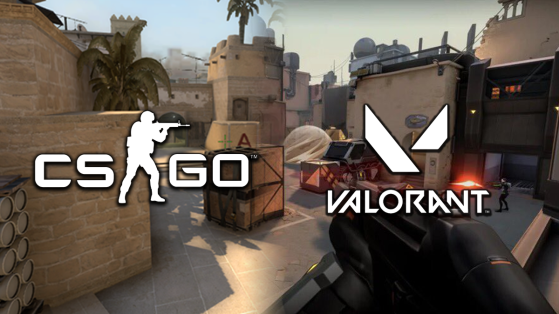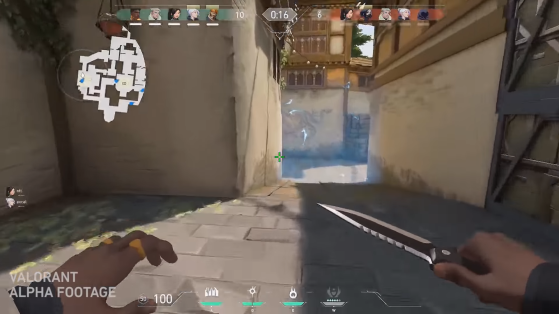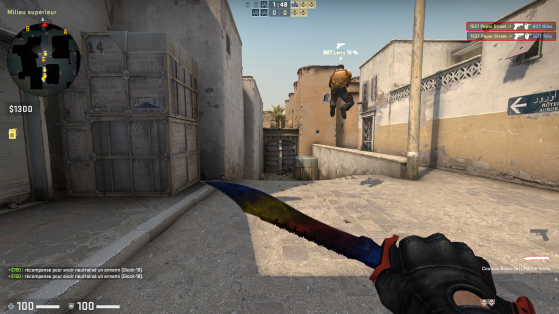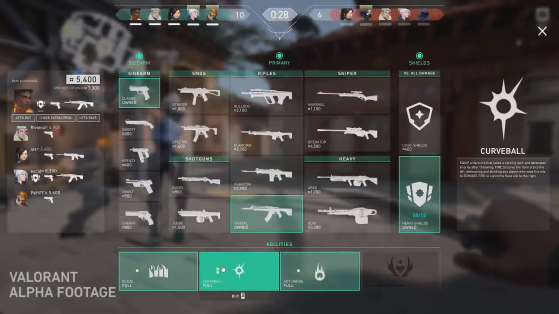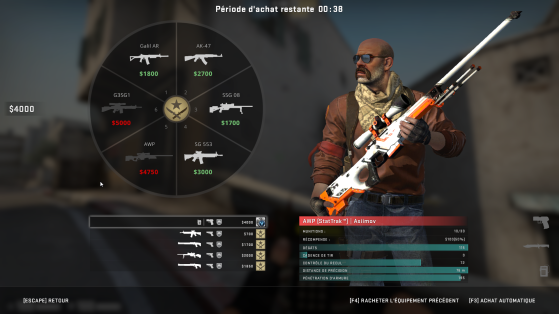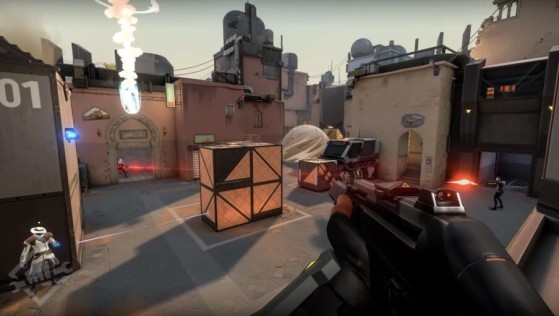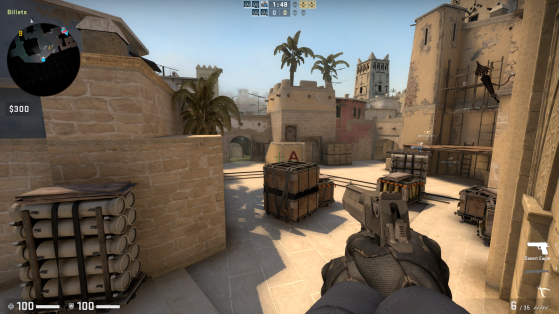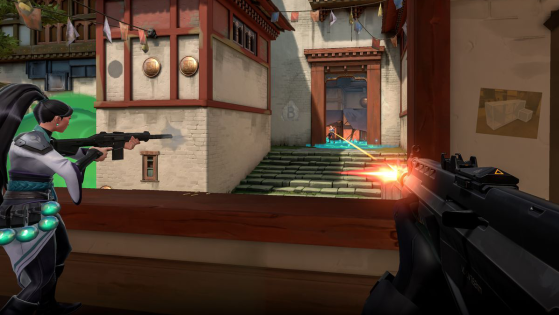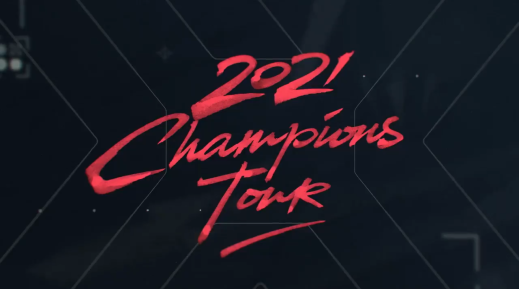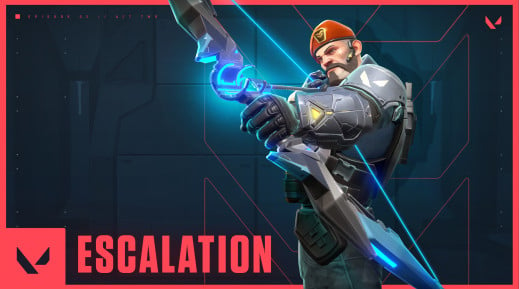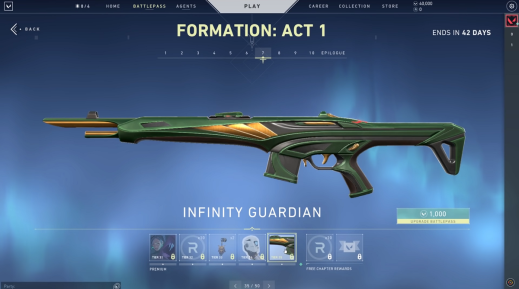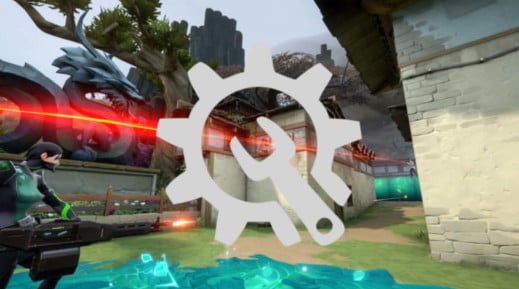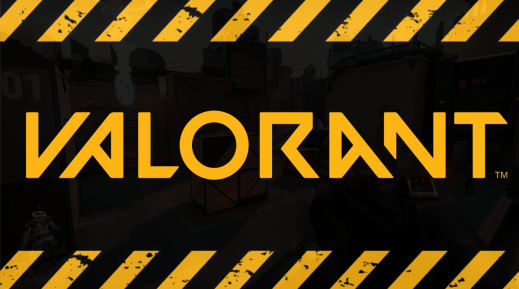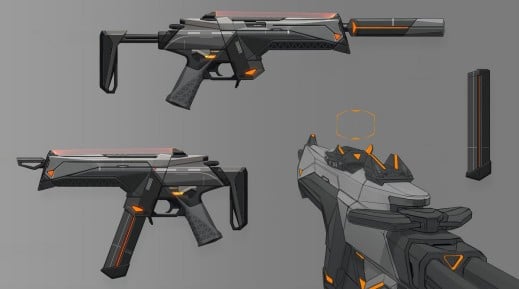As the Counter Strike series will celebrate its 20th anniversary, Riot Games wants to strike hard in the FPS world and wants to make its own a direct competitor to the popular CS:GO named Valorant. While the ambition is noble, the task is proving difficulties and many publishers have already broken their teeth on it. After the release of a gameplay video, let's analyze the similarities between the two games.
HUD
The HUD is pretty much the same as Counter-Strike; mini map at the top left, timer and team at the top, life, weapons and abilities spread out at the bottom.
Cross-hair (scope) is almost the same as the default one in previous Valve games. Players start the game with the knife in hand, which seems to give them the benefit of increased movement speed — just like in CS:GO.
Weapons and shop
The purchase menu, with a different visual, presents the same options as on Counter Strike. Pistols, SMGs, shotguns, rifles, or snipers are available to players if their savings allow it. Similar weapons from CS:GO to Valorant can be found without too much imagination.
- Classic Pistol → USP
- Frenzy → CZ
- Ghost → Five-seven
- Sheriff → Deagle
- One automatic shotgun and one semi-automatic shotgun
- Bulldog → FAMAS
- Phantom → M4
- Vandal → AK4
- Marshal → A Scout
- Operator → AWP.
Whether in appearance, gradual rise in price and range, or different types of weapons in different categories, Valve FPS fans should be able to find their way around without much difficulty.
Riot Games has always assumed — like Blizzard did in the past — the choice of taking the best of each competitor in a range of games and condensing it into their work.
Map
Another interesting point is the construction of the map. Visible only on the mini map of the video, we can already analyze its typology which is close to the CS maps: three "Bombsites" — called Bombpoints after —with always at least two access points. A rather "square" map, reminiscent of the famous de_dust2. Bombpoints are connected to each other by corridors that seem quite closed. This is called a "choke point".
Bombpoint A with four access points — two for each side — is decorated with a long corridor similar to the "banana" of_inferno. Bombpoint B — open in 3 places — seems to be surrounded by wide neutral zones which will be the scene of many clashes. Bombpoint C is connected by 3 narrow corridors where the skill, patience and special abilities of the agents should make the difference.
Gameplay
After about twenty seconds of warm-up where the players get into position on the map, the round begins. The team we follow seems to be "in defense" of the objective zones. From the beginning of the round, the players use their powers (00:42) to fight in the combat zones. A mechanic well known to Counter Strike fans where grenades are mostly used at the beginning of the round to conquer the neutral areas of the map.
During the round, we can highlight the numerous connections between the two FPS:
- 00:49: The first kill shows that once again, Valorant's HUD is very clearly similar to CS's HUD.
- 00:53: After the first kill, the player tries a wallbang on a second enemy.
- 01:36: Players exchange a lot of information thanks to the in-game voice chat. At this precise moment, one of the players talks about "retake together". As in CS:GO, coordination between players is logically a major part of the game.
- 02:13: After having killed the last opposing player in a 1v1, the defender must now "defuse" the bomb. Beyond the mechanics which is clearly copied from CS:GO, we can see that the defuse timer is divided into two — which seem to inform us about a possible defuse kit system.
Last but not least and probably very emblematic of the end of a CS:GO round, we note that the player who just defused takes the equivalent of the AWP to save it.
